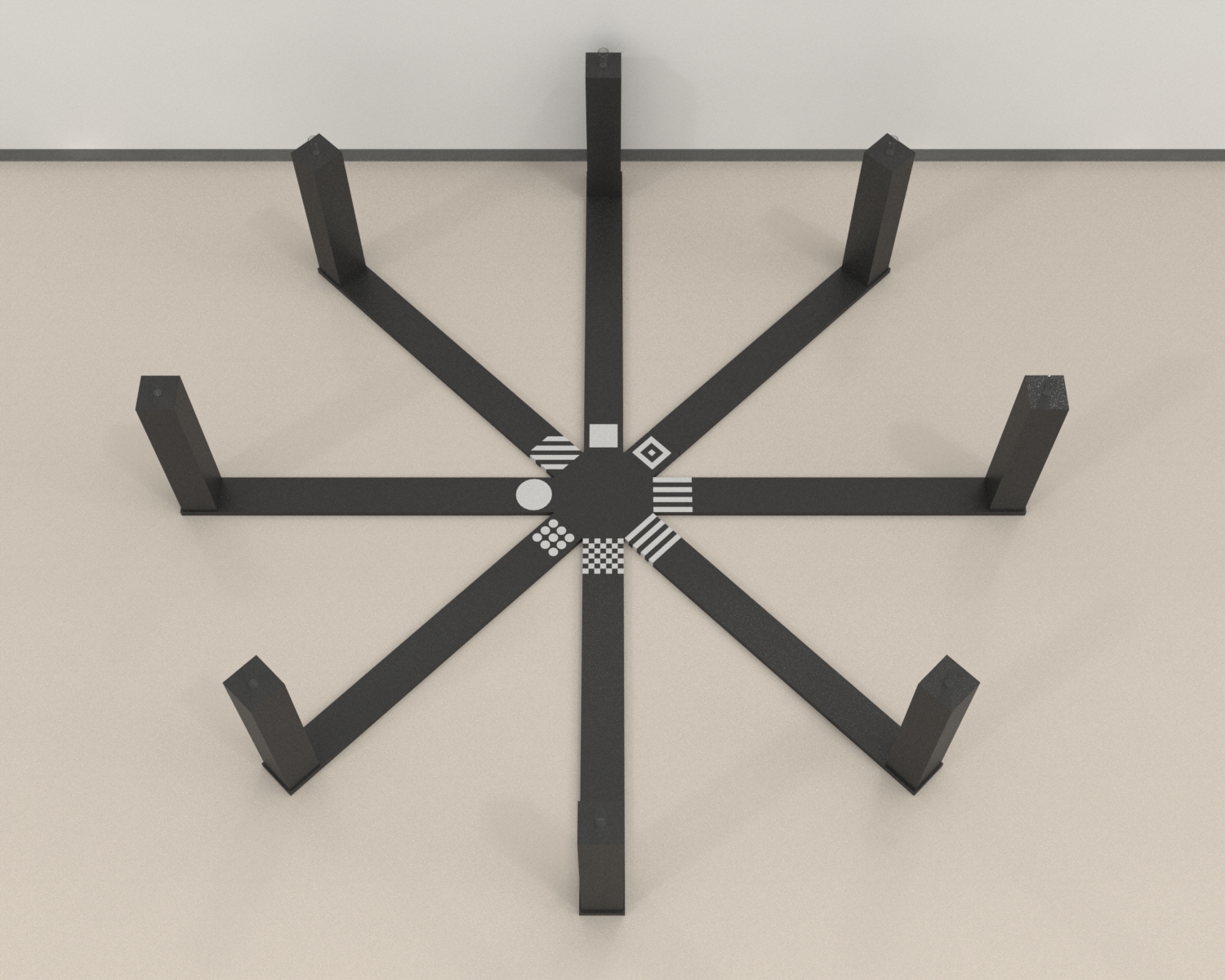The Walking Radial Arm Maze is a human-size adaptation of the conventional rodent Radial Arm Maze that is popularly used in the assessment of spatial learning and navigation in rodents. The maze is used in evaluating spatial processing and navigation abilities of humans based on the presence of different local and distal cues.
The maze is constructed using a mat with 8 alleyway positions marked on it. The alleyways radiate from a central circular start area. Each arm can be equipped with a specific removable floor pattern. At the ends of each arm, reward holders having a capacity of 2 dl are present.
Mazeengineers offers the Walking Radial Arm Maze.

